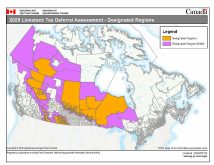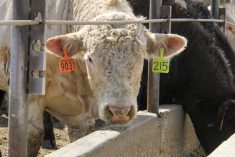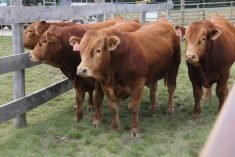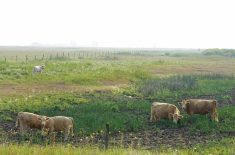Alberta’s drought livestock assistance program has added 23 more municipalities to areas eligible for funding and tax deferral.
“Last year was a tough one for Alberta’s livestock producers and the expansion of this AgriRecovery initiative means that more producers can receive critical support for their breeding herds,” said Darryl Kay, CEO of the Agriculture Financial Services Corporation in a news release today.
The 2023 Canada-Alberta Drought Livestock Assistance initiative, funded through the AgriRecovery framework by the federal and provincial governments, offers payments of up to $150 per head to livestock producers who have 15 or more animals per type of livestock, and have altered usual grazing practices for more than 21 days due to drought.
Read Also

U.S. livestock: ‘Cattle on feed’ report supports prices
Chicago cattle futures rose as the USDA’s ‘Cattle on Feed’ report showed inventories two per cent down from a year…
Funding will open for the new regions on January 29, with a deadline of Feb. 22. Extraordinary costs can be incurred until March 31, the release said.
Additionally, livestock farmers and ranchers in those areas may be eligible for the 2023 Livestock Tax Deferral, which allows farmers who sell part of their breeding herd due to drought to defer a portion of the sale proceeds to the next year, as per the Government of Canada’s website.
The eligible regions now stretch from the province’s southern border to an area around Edmonton, with cutouts around Jasper National Park and Hinton in the west. The area around Grand Prairie is also eligible along with municipalities on the western half of the province, stretching to the north border.
The province is in the throes of what has been called a once-in-a-generation drought. In late October, the Canadian and Alberta governments opened applications for the livestock assistance program, promising up to $165 million in aid.
Alberta’s woes have continued into the winter. At a recent event in Lethbridge, Dennis Matis, Oldman basin infrastructure manager with Alberta Agriculture, warned that snowpack in the mountains–vital to irrigation in southern Alberta–is among the lowest seen in a generation.
He estimated that they’ve seen lower than normal water levels every year since 2015.
—Geralyn Wichers is associate digital editor of AgCanada. She writes from southeast Manitoba.















